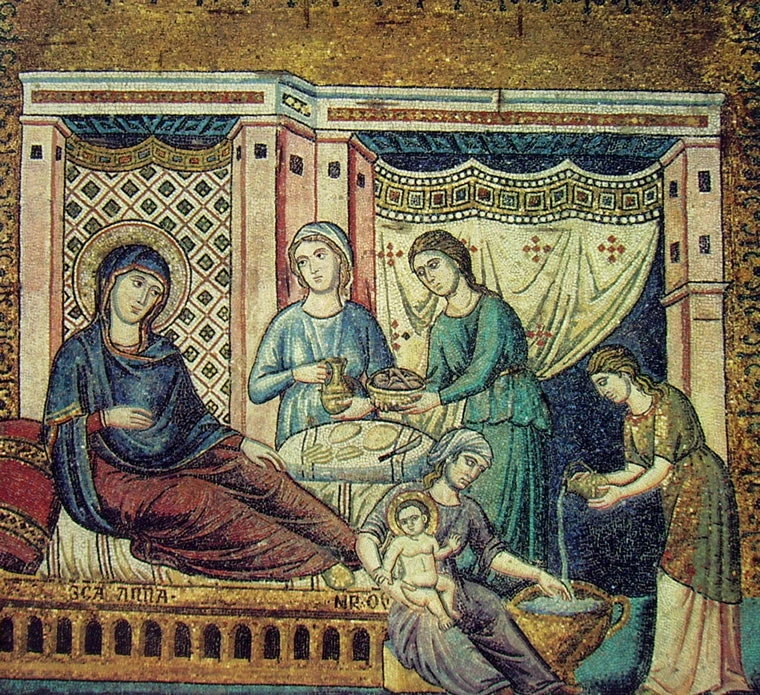The exact date of the birth of the Blessed Virgin Mary is not attested by precise historical sources.
Christian tradition, however, has set two main dates to celebrate this event: September 8 and August 5.
The celebration of Sept. 8, which is more widespread and established in the liturgical calendar, is linked to the construction of the Basilica of St. Anne in Jerusalem, believed to be the site of Mary’s nativity.
This date, over the centuries, has become deeply rooted in popular devotion and the Church’s liturgy.

August 5, on the other hand, is associated with the miracle of snow on the Esquiline Hill in Rome, which occurred in the 4th century.
This divine prodigy was interpreted as a divine sign indicating the place to erect a basilica dedicated to the Virgin.
Later, this date was linked to her birth, particularly from the Marian apparitions in Medjugorje.
Information about Mary’s childhood comes mainly from apocryphal texts, such as the Proto Gospel of James and the Gospel of Pseudo-Matthew, which, although not part of the biblical canon, offer detailed narratives about her family and the historical-religious context in which she lived.
Although the canonical Gospels provide only brief mentions of the figure of Mary, they confirm her centrality in the Mystery of Salvation.

Liturgically, the feast of the Nativity of the Virgin Mary is celebrated with particular solemnity in many Christian traditions, both Catholic and Orthodox.
Several churches and shrines around the world are dedicated to this event, and each year thousands of pilgrims participate in celebrations and processions in honor of the Mother of God.
The Prima Bottega collection contemplates numerous products from the Affresco line that pay homage to the figure of the Virgin, from the hood, to the expandable backdrop, from the furniture picture to the urn.
In addition, it is possible to make customizations using the images of the peculiar devotion related to the various territories.